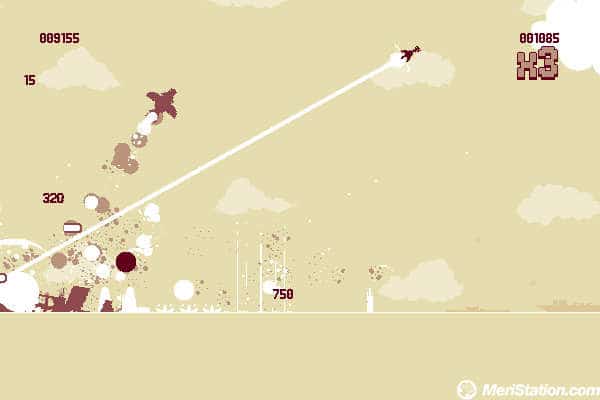The small group Vlambeer has smiled karma, after fate played a trick on them. This independent Dutch group is a duo made up of Rami Ismail and Jan Willem Nijman, who once staged the news for an unkind fact. The group had created a successful and brilliant game in Flash: Radical Fishing, a game that was directly cloned by another studio and taken to iOS as a paid game, raising a
great controversy at the same time that Vlambeer gained recognition with new titles such as Super Crate Box. The duo had to overcome many fears and insecurities, but together with other collaborators, they fought against this injustice in the best way they knew: making games. They took their original concept with Radical Fishing and turned it into Ridiculous Fishing,
also launching it on mobiles to compete with Ninja Fishing, the successful game that had so blatantly copied its original idea. The destination rewarded the Dutch couple turning their proposal into one of the biggest hits of the year in iOS, to the point of being awarded as the best Iphone 2013 game by Apple.
It has been an extraordinary year for the group and this 2014 they are willing to keep their good luck, starting with the launch of the awaited Luftrausers, an arcade aerial combat game that started in Vita and ended up appearing multiplatform on PC, PS3 and on the own Sony laptop.
From the beginning it stood out for its curious graphics limited to a small number of colors and for the spectacularity of its action, its explosions and its movements, to the point that it has become quite popular in animated gifs in certain forums. It really is a title to see moving and the static screens not only do not do it justice but also give an image of him much poorer than in reality.
The main idea can not be simpler. We appear from a submarine in a limited air space by the sea below and the clouds above, all in perfect 2D. Our plane has a movement strongly conditioned by momentum and inertia, in a way that reminds us of a hypervitaminized version of the classic Asteroids, but with gravity. We can rotate in 360 and use our engine to propel us in the direction we want,
bearing in mind that when we stop the engine we will continue to drive, although falling progressively according to our inclination. Things like compensating for the inertia of a fall to propel us and the flight back cost a valuable time, but everything adjusted perfectly to be satisfactory. In these circumstances, our aircraft is constantly in motion, unable to stop altogether, advancing
swiftly in a straight line, rising to the heavens, plummeting into the sea, or drawing strange arcs that have little to do with aeronautics and much with a game design that understands that every good arcade starts with fun control.
Without much time to familiarize ourselves with the controls, enemies begin to appear on the screen. Small planes that chase us, and modest boats that attack us from the sea. We are completely alone and also with an aircraft that does not stabilize, nor stays in the air as if it were a
Shoot’em Up. We find that we have to manage to aim and move at the same time, and it is a challenge. Soon multiply the number of projectiles on the screen, we started to hit directly with the enemies that fill the space and a few seconds later we died in a spectacular explosion. Back to start, and put up with a bit more without
knowing exactly how, but having fun in the process. We learn to control our vehicle a little better, we discover that we can touch enemies and even destroy them without firing, but we also find that we have limited resistance, and that several very close impacts destroy us very quickly.
It is in this phase of discovery when we find that we have “regeneration of life”, we can regenerate the delicate health of our ship if we hold for a few seconds without receiving impacts.

